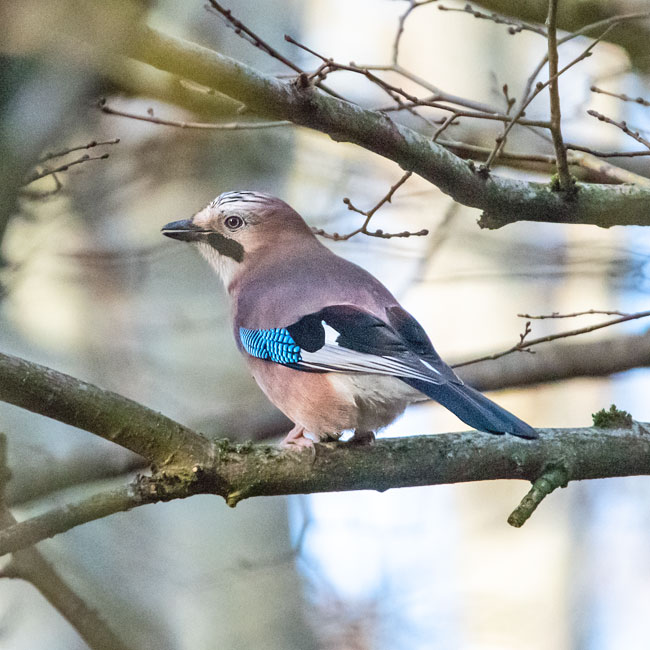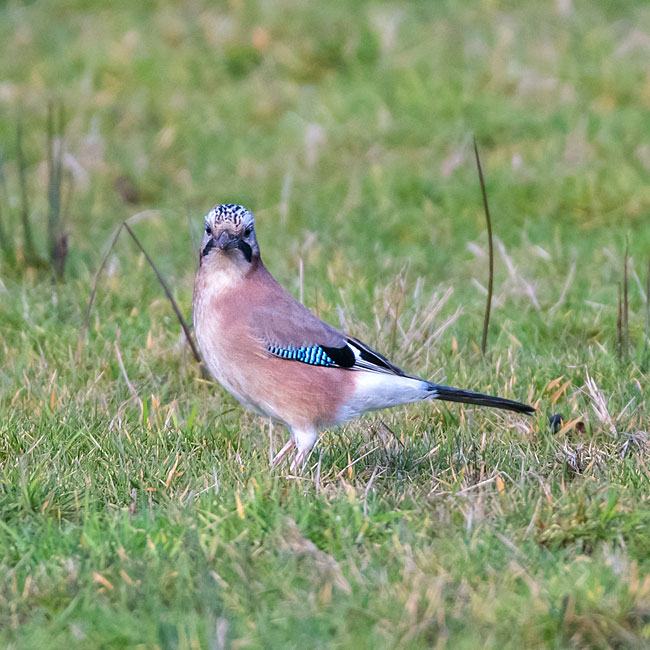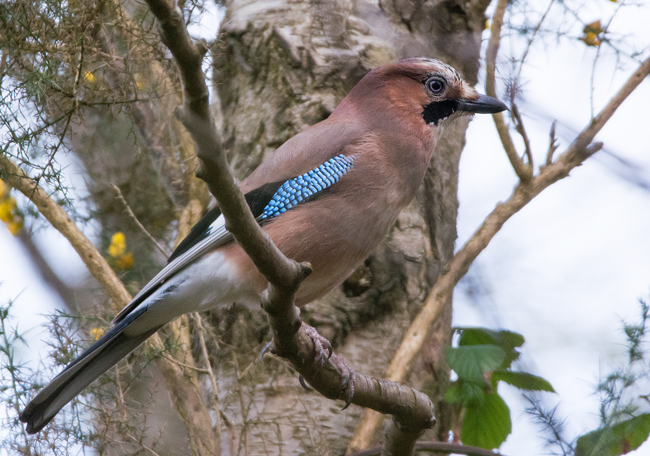
|
Eurasian Jay
|
||
|
Taken
at Baron's Haugh on 8th June 2024 using Nikon D500 with Sigma 600 mm zoom lens.
|

|
|

| Taken at Strathclyde Park on 19th December 2023 using Nikon D500 with Sigma 600 mm zoom lens. |  |

| Taken at Baron's Haugh on 22nd February 2021 using Nikon D500 with Sigma 600 mm zoom lens. |  |

| Taken at Corstorphine on 18th April 2017 using Nikon D5200 with Sigma 600 mm zoom lens. |  |

| Eurasian Jay. |
| Species: Order: Family: Local Names: |
Garrulus
glandarius. Passeriformes. Corvidae. |
| Site
Of Nest: Food: Feature: Plumage: Breeding Period: Eggs: |
Trees or large shrubs. A wide range of invertebrates, acorns (which it buries for use during winter), seeds, fruits, young birds, eggs, mice, small reptiles and small snakes. The Jay is well known for its mimicry, often sounding so like a different species that it is virtually impossible to distinguish its true identity unless the Jay is seen. It will even imitate the sound of the bird it is attacking, such as a Tawny Owl, which it does mercilessly if attacking during the day. However, the Jay is a potential prey item for owls at night and other birds of prey such as Goshawks and Peregrines during the day. Pinkish brown, the underparts being slightly paler. The head has a black and white flecked crown, black moustache and white throat. The white rump contrasts starkly with the black tail. The iris of the eye is a pale blue, the bill is black and the legs are pink-brown. The wings are mostly black with white patches but also have striking blue patches, but close to these wing patches are actually bands of graduated shades of blue: Late April. Clutches 1. 3 - 10 Smooth, glossy, pale blue-green or olive with buff-coloured speck. |
| Voice: |